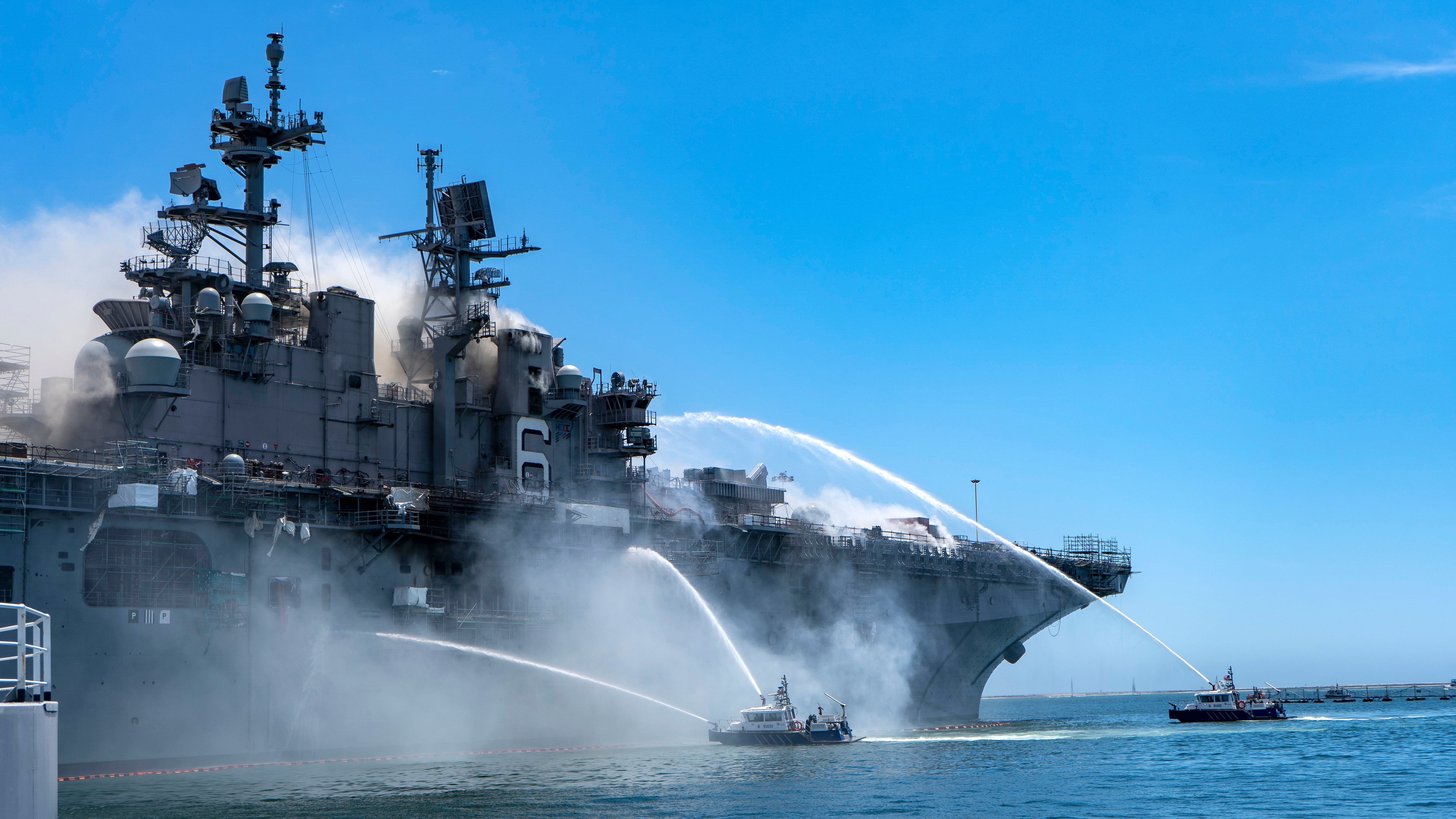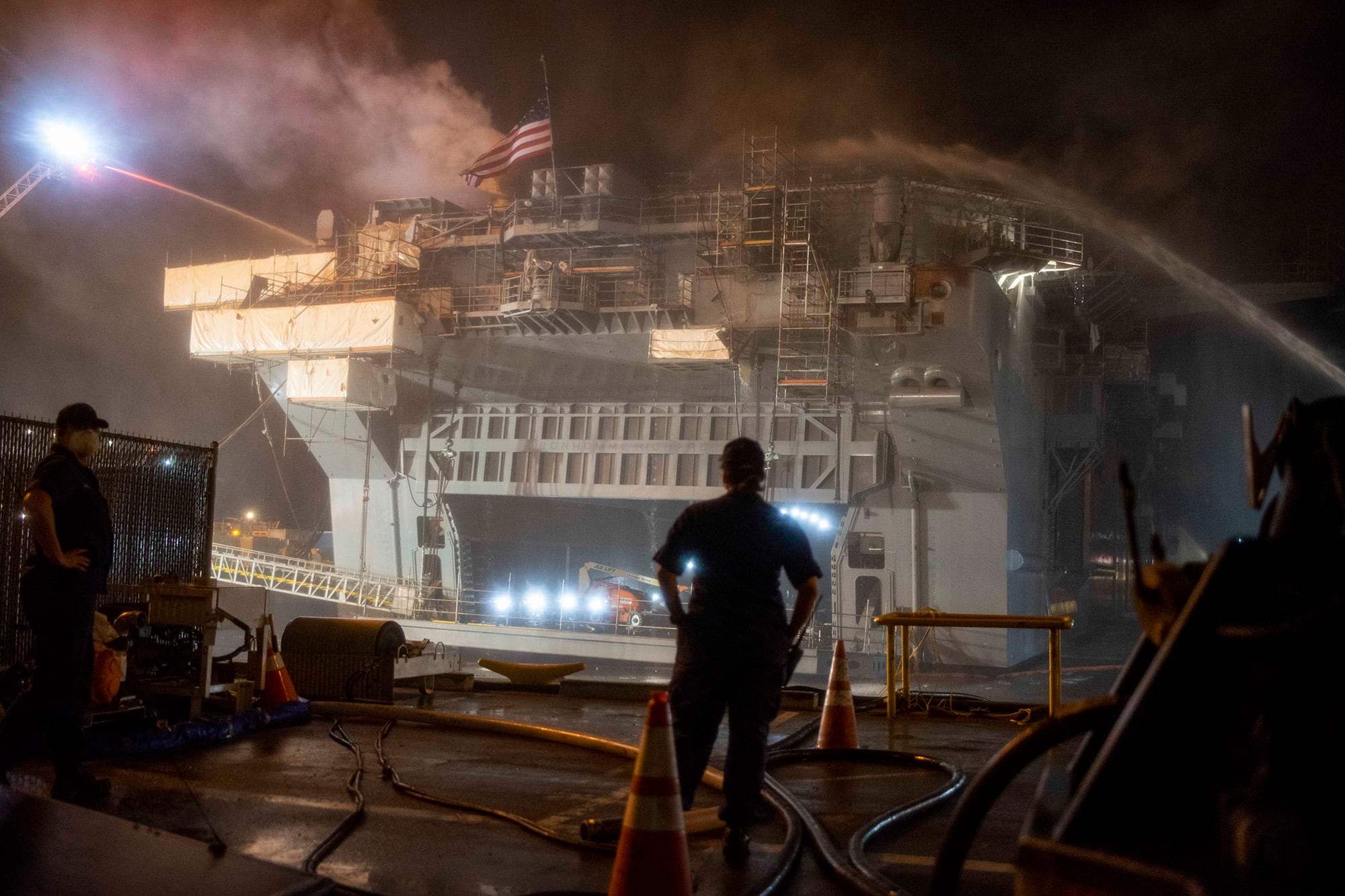Sometimes a disaster can spur innovation. For example, the devastating losses of battleships at Pearl Harbor forced the Navy to rely on aircraft carriers as its main striking arm in the early part of World War II in the Pacific. Showing their worth at the Coral Sea and Midway, the carriers became the centerpiece of the Navy up to this day.
The devastating fire aboard the USS Bonhomme Richard (BHR) could be another case; if so, it might well change the role of carrier aviation. The Navy had hoped that the BHR would be the key to keeping the new F-35B continually deployed in the western Pacific as a deterrent to Chinese naval ambitions there. Because the F-35B is a fifth-generation strike aircraft capable of near-vertical take-off and landing, it can operate from smaller amphibious carriers and not just large conventional aircraft carriers. This means that the Navy could have a larger number of F-35 capable platforms enabling our navy to maintain continuous WESTPAC presence. The BHS fire ruined that plan, but it might well provide the Navy the impetus to make a long-needed change in its warfighting strategy in response to China’s growing anti-access/access denial (AA/AD) capability.
RELATED

Critics of the Navy’s decades old big deck power projection strategy have claimed that it plays into Chinese hands by putting too many eggs in one basket. One retired Air Force general officer correctly noted of the BHR situation that, “if the loss of one ship can ruin your entire strategy, you have a bad strategy.” This could be the opportunity for the Navy to innovate and develop a more distributed fleet with which to counter AA/AD approaches. China is not the only potential adversaries developing such anti-Navy approaches; Iran and Russia are doing so, as well.
The Navy has stubbornly held to the “big deck” power projection concept even as the strategic environment has shifted. Chances are that even with the loss of the BHR, the admirals will try to do even more with even less by lengthening future deployments. However, there is a cheap alternative course of action that might make the fleet in the western Pacific more survivable in the Chinese AA/AD environment. The Navy could do so by purchasing or renting freighters and obsolete oil tankers and fitting them out with flight decks. Three-to-four of them could replace the BHR much more quickly than repairing or replacing the stricken ship and make the Chinese targeting problem much more difficult in the event of a conflict.
There is nothing new under the sun, and this idea harkens back to the World War II concept of the “jeep carrier.” Those were also merchantmen converted to ad hoc carriers. There is an additional advantage to using converted merchant ships in today’s technological environment. Even commercial ships considered obsolete by shipping companies are much more highly automated than existing carriers and amphibious ships. In an increasingly competitive recruiting/retention environment, the savings in manpower would be a plus. In addition, a near-empty empty oil tanker is close to impossible to sink.
This does not mean that the aircraft carrier is obsolete, but it does mean that its role would change. In the event of a conflict, the more distributed F-35 aircraft would combine with missiles, long-range Air Force bombers, and Marine Corps assets to degrade the Chinese AA/AD environment in order to allow big-deck carriers and amphibious ships to conduct more conventional power projection operations to impose a peace on terms favorable to America and her allies.
A major argument against the more distributed concept is aircraft maintenance. The “jeep carrier” concept will not likely accommodate on-board maintenance aboard the distributed platforms for situations that the organic squadron maintenance crews cannot handle. There are innovative solutions to overcome this challenge. Contact teams with replacement parts could be flown to the distributed platforms from shore-based installations if the airplane cannot fly. If the aircraft can fly; but requires maintenance beyond the capacity of its onboard ground grew, it can be flown to a repair facility ashore or a big-deck carrier outside the most dangerous zone of the Chinese AA/AD complex. Distributed platforms could also carry Army missiles and tilt-rotor borne Marines.
The BHR fire should be a wake-up call for our admirals. Current U.S. naval strategy is a gift to the Chinese. The defense of the primacy of the big-deck carrier harkens back to the battleship-carrier controversy before World War II. It should not take another Pearl Harbor to incite innovation.
Gary Anderson retired as the chief of staff of the Marine Corps Warfighting Lab. He currently lectures on Red Teaming and wargaming at the George Washington University’s Elliott School for International Affairs.





